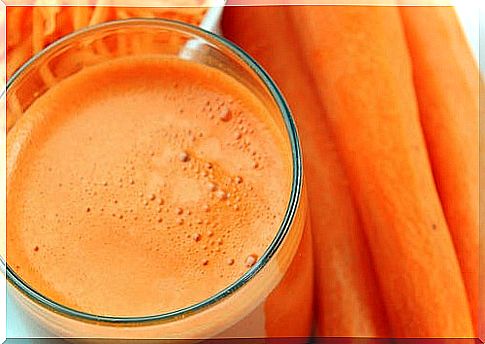Tips For Sunbathing In The Healthiest Way
The foods that help us have a healthy and beautiful tan are those that contain beta-carotene, which we find in yellow and orange fruits and vegetables and red

On sunny days, even if they are not too hot, we want to lie in the sun to enjoy the feeling of well-being that it gives us, as well as to tan.
However, we must bear in mind that exposure to the sun, without taking proper precautions, is responsible for a large number of acute and chronic dermatological diseases, including skin cancer.
In this article we give you some essential guidelines to sunbathe safely, to benefit from the properties of the sun without suffering the negative effects, as a little exposure to the sun can cause vitamin D deficiencies.
Sunbathing first: My skin type
We cannot give advice that is valid for all people, and in this case we still have to specify more, since not all skins are the same. Biological photoprotection are the defenses generated by the skin itself against the sun that occurs when the production of melanin is activated by the action of the sun.
The more pigmentation the skin has, the more natural protection it has. This could also mean that individuals with higher amounts of melanin, which confer a darker skin color, may have a lower ability to synthesize vitamin D.
The results of some studies conclude that individuals with darker skin pigmentation may require a longer duration of sun exposure to achieve a similar degree of vitamin D synthesis than those with lighter skin.
On the other hand, when it comes to taking precautions to protect themselves from the sun, those with fair skin should be more strict as they are more prone to burns.
We must also know that if we have skin problems such as psoriasis, acne or dermatitis, proper sunbathing can be beneficial. The data from this study support the hypothesis about the positive effect of UV radiation on atopic dermatitis in patients without eczema.
The ideal schedule
The ideal time to sunbathe is another very important factor that we must take into account. The effects of solar radiation have also been worsening. According to some data, the best time to sunbathe is between 10 am and 1 pm
Broadly, we should avoid the 12 to 17 hour time slot, but we will do this especially in summer. In winter we can reduce this time slot from 12 to 16 hours.
The healthiest thing is to sunbathe in the early hours of the day. This is because it is the moment that gives us the most energy, even influencing our mood. Late in the day, in the evening, the light emitted by the sun could have relaxing effects.
How long
The time of exposure to the sun varies according to our skin type, the temperature or the latitude of the place where we are, among other factors. Winter is a time when it is also very necessary to sunbathe. But we must not expose ourselves in an abusive way in summer.
Adequate protection
The sunscreen must be appropriate for our skin type, in general it is recommended that it be a quality product with a factor greater than 30 SPF.
We will have to renew protection often. In addition, we must not forget to wear suitable sunglasses and a cap or hat to avoid the continuous impact of the sun on the head. It is also essential to drink enough water.
The essential foods
Some foods that contain beta-carotene or lycopene provide us with antioxidant micronutrients in the skin and increase the dermal defense against UV radiation, support long-term protection and contribute to the maintenance of the health and appearance of the skin.
Some of the foods where we find beta-carotene are in yellow, orange and red fruits and vegetables, such as:
- Carrot
- Pumpkin
- Sweet potato
- Peach
- Apricot
- Cherry
- Tomato
A good way to have a very nutritious sun protection is by taking one of these recipes daily:
- Apple, carrot and celery smoothie
- Pumpkin cream and sweet potato with cinnamon
- Homemade peach or apricot compote with ginger
- Gazpacho or tomato and cucumber juice with flax oil

However, in terms of sun protection factor, in these foods it is considerably lower than that achieved by using topical sunscreens. Therefore, even if you take these fruits and vegetables, you should not stop taking the indicated precautions.









